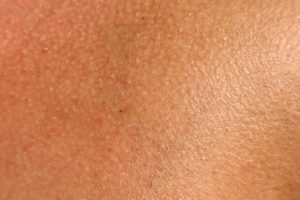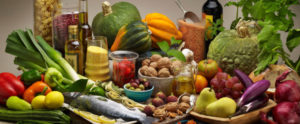About 300,000 people are diagnosed with Lyme disease every year, according to new estimates from the Centers for Disease Control and Prevention (CDC). Lyme disease is caused by bacteria that multiply in the bodies of ticks, people and animals, including mice, deer and dogs.... the tiny blacklegged deer tick, which is the most common transmitter of Lyme disease.
These deer ticks pick up Lyme bacteria (Borrelia burgdorferi) when they feed on the blood of infected mice, chipmunks and other hosts. Infected ticks in both the nymphal and adult life stages can then transfer the Lyme bacteria to humans if they latch on for a meal and feed for approximately 36 hours or more. Lyme disease is highly treatable when it’s detected early, but devastating when the infection goes unnoticed for more than a few months.
Let Poultry Help with Tick Prevention Leafy wooded areas and grassy meadows are the preferred habitats for blacklegged deer ticks and American dog ticks, which both spend their larval stage in leaf litter, their nymphal stage on small animals, and their adult stage in tall grass or other shrubby vegetation. People have learned how to get rid of ticks by keeping foraging chickens and guinea fowl on their property. In April 2015, we launched the MOTHER EARTH NEWS Chickens and Ticks Survey, and responses revealed that: 71 percent had an existing tick problem before they got poultry, 78 percent kept poultry that helped control or eliminate ticks within the birds’ feeding range, 46 percent experienced a drop in tick populations within a month after getting poultry; 45 percent saw good control after several months to a year.Many respondents noted that small bantam chickens and game hens can get into tight spots where larger birds can’t fit, resulting in better tick control....
Permethrin-Treated Clothes and ‘Tick Tubes’ If you live in one of the 13 states where Lyme disease risk is highest, learning how to get rid of ticks should be a top priority. You might want to consider using permethrin, a non-organic pesticide that repels and kills ticks. Permethrin is more potent and persistent than the organic materials we usually recommend. We suggest using a formula designed to be applied to clothing rather than misters, sprayers, foggers or other permethrin products. Clothing products that are pre-treated with permethrin are available, or you can buy permethrin with instructions for how to use it to treat your clothes. Take care to not expose kids to this pesticide...The EPA also classified permethrin as “likely to be carcinogenic to humans,” so weigh the risk of infrequent exposure to the risk of Lyme disease in your area.
You might also consider permethrin-infused “tick tubes,” which are designed to kill ticks on white-footed mice as well as chipmunks and rats, the main animals from which ticks become infected with Lyme. The tick tubes offer nesting materials impregnated with the pesticide to such critters. The animals then take the material back to their nests, where it kills any ticks that may have latched on to the adults and their young. The small amount of permethrin used in tick tubes is not water-soluble, so it’s not likely to end up anywhere but in a nest. Sold commercially as Damminix Tick Tubes, these devices are easy to make yourself....
Herbal Tick Repellents Many of our survey respondents reported that they apply veterinary-prescribed tick preventatives on their dogs and cats, but would prefer more organic repellents. Two plant-based aromatics — sweet-scented “rose” geranium (Pelargonium graveolens) essential oil and eastern red cedar (Juniperus virginiana; also known as “red cedarwood”) essential oil — were repeatedly recommended by readers who use them as spray-on repellents for pets and family members alike....Both geranium essential oil and eastern red cedar essential oil have proven to be successful repellents against ticks in various life stages, according to the Journal of Agricultural and Food Chemistry and the Journal of Medical Entomology, respectively.
Using full-strength essential oil can injure human skin and overwhelm pets’ sensitive noses, so follow this simple recipe when making a liquid anti-tick spray: In an 8-ounce spray bottle, combine 10 to 20 drops of rose geranium or eastern red cedar essential oil with 1 teaspoon of vodka or rubbing alcohol. Fill the rest of the bottle with water and shake to combine. The spray can be applied to your skin or clothing....
More Tick Prevention Tricks Fencing out deer, the primary host of adult Lyme-infected ticks, can help prevent ticks from reaching your land. Low-cost, plastic-mesh deer fencing is available online and at farm stores. Ticks rarely inhabit lawns that are mowed regularly. Raking up leaves and composting them deprives overwintering ticks of shelter.
When hiking where tick populations are high, stay on the trails and dress defensively — pull your socks up over your pants. When only shorts will do, some people cut off the ankle sections of old socks, spray them with a repellent, and wear the tubes around their calves like tick-deterring leg warmers.
A study published in Experimental and Applied Acarology found that spraying outdoor areas with Safer-brand organic insecticidal soap in spring, when blacklegged deer tick nymphs are active, can provide treatment that is equally as effective as spraying with the insecticide chlorpyrifos.
After you’ve been outdoors, check your dogs for any ticks that may have latched on, and then make your way to a hot, soapy shower followed by a careful body check. You can kill any ticks that have attached to your clothing by immediately putting your clothes into the dryer for 15 minutes on the hottest setting, and then washing them. Most ticks are sensitive to dry heat, but may survive even the hottest wash.
 This is a nice study showing cause and effect: 6 hours of sleep or less at night lowers the body's resistance so that the person is more likely to catch a cold virus. From Science Daily:
This is a nice study showing cause and effect: 6 hours of sleep or less at night lowers the body's resistance so that the person is more likely to catch a cold virus. From Science Daily:
 Once again, a study finds that a supplement has no benefit - here
Once again, a study finds that a supplement has no benefit - here  Some recent studies looked at aspirin use and cancer and found that consistent use for a number of years (5 to 10 years) lowers the rate of a number of cancers, including colon cancer. However, the longer one takes daily aspirin - then harms start adding up, with a major one being gastrointestinal bleeding. NSAIDs (non-steroidal anti-inflammatory drugs) are also linked to lower rates of various cancers, but harms with long-term use are cardiovascular risks (stroke and heart attack). The first article discusses that many doctors think this lower cancer rate occurs because aspirin and NSAIDs
Some recent studies looked at aspirin use and cancer and found that consistent use for a number of years (5 to 10 years) lowers the rate of a number of cancers, including colon cancer. However, the longer one takes daily aspirin - then harms start adding up, with a major one being gastrointestinal bleeding. NSAIDs (non-steroidal anti-inflammatory drugs) are also linked to lower rates of various cancers, but harms with long-term use are cardiovascular risks (stroke and heart attack). The first article discusses that many doctors think this lower cancer rate occurs because aspirin and NSAIDs  This article discusses the fungi living on our skin. Recent research (using state of the art genetic analysis) has found that healthy people have lots of diversity in fungi living on their skin. Certain areas seem to have the greatest populations of fungi:
This article discusses the fungi living on our skin. Recent research (using state of the art genetic analysis) has found that healthy people have lots of diversity in fungi living on their skin. Certain areas seem to have the greatest populations of fungi:  Nice article about ticks, tickborne diseases (of which Lyme disease is one), and possible
Nice article about ticks, tickborne diseases (of which Lyme disease is one), and possible  Artificial trans fats in foods are bad for health in so many ways: linked to increased risk of coronary heart disease, atherosclerosis, inflammation, and risk of early death. And even though the FDA is finally phasing out partially hydrogenated oils (because they have high levels of
Artificial trans fats in foods are bad for health in so many ways: linked to increased risk of coronary heart disease, atherosclerosis, inflammation, and risk of early death. And even though the FDA is finally phasing out partially hydrogenated oils (because they have high levels of  Trans fats are commonly used in processed foods to improve taste, texture, and shelf life. Artificial trans fats are found in partially hydrogenated oils and in other ingredients, such as refined oils, emulsifiers, flavors and colors. Even those processed foods that say zero trans fats may contain trans fats - due to a loophole in labeling laws (if it has less than .5 grams per serving, then it can be rounded down to zero - thus allowing the incorrect claim of zero trans fats). Eating a variety of processed foods, each containing a little trans fats, easily adds up to eating a significant amount daily.Trans fats in the diet have long been linked to cardiovascular disease, artherosclerosis, obesity, oxidative stress, and inflammation, but now research finds that it is linked to a poorer memory in middle-aged men under the age of 45. From Science Daily:
Trans fats are commonly used in processed foods to improve taste, texture, and shelf life. Artificial trans fats are found in partially hydrogenated oils and in other ingredients, such as refined oils, emulsifiers, flavors and colors. Even those processed foods that say zero trans fats may contain trans fats - due to a loophole in labeling laws (if it has less than .5 grams per serving, then it can be rounded down to zero - thus allowing the incorrect claim of zero trans fats). Eating a variety of processed foods, each containing a little trans fats, easily adds up to eating a significant amount daily.Trans fats in the diet have long been linked to cardiovascular disease, artherosclerosis, obesity, oxidative stress, and inflammation, but now research finds that it is linked to a poorer memory in middle-aged men under the age of 45. From Science Daily: Another study finds health benefits to eating a
Another study finds health benefits to eating a  Huh,,.who knew? It turns out that romantic kissing is not a universal, and that it varies from culture to culture throughout the world with most cultures NOT engaging in romantic kissing. Most cultures in the Middle East, North America, Europe, and Asia do engage in romantic kissing. From Science Daily:
Huh,,.who knew? It turns out that romantic kissing is not a universal, and that it varies from culture to culture throughout the world with most cultures NOT engaging in romantic kissing. Most cultures in the Middle East, North America, Europe, and Asia do engage in romantic kissing. From Science Daily: